Does dining room furniture need to match? 5 principles designers always follow
This is how designers say to approach dining room furniture for a welcoming aesthetic and elevated design interest


The dining room is one of those places where inherited design choices come to surface all too easily. Silverware, a gifted table runner, and delicate crockery may have always been featured as part of your dining table decor, and perhaps with little thought at that, but if you have always kept everything matching in this space, is this actually a must?
Though there are many ways to dress a dining table, it is only natural that we default to our most loved and failsafe options. If you are curious to know whether an ugly duckling piece of dining room furniture needs to be demoted to the garage, we called on four design experts for some clarification on the subject.
Does dining room furniture have to match?
Nowadays, dining room furniture does not have to inherently match. There is beauty in imperfection, after all.
'Traditionally a dining set would match, but that is not as common today,' says Ami McKay, Creator of PURE Design: Interior Design, Build & Shoppe. 'Today, not being too matchy-matchy is a style choice,' says McKay.
This is not to say that there is no room for overlaps in style, texture, and/or, color but rather, you want to be more intentional with how you match up dining room furniture as part of the bigger picture for your space.
This is how designers say to approach your dining room furniture instead for a more welcoming aesthetic and elevated design interest:
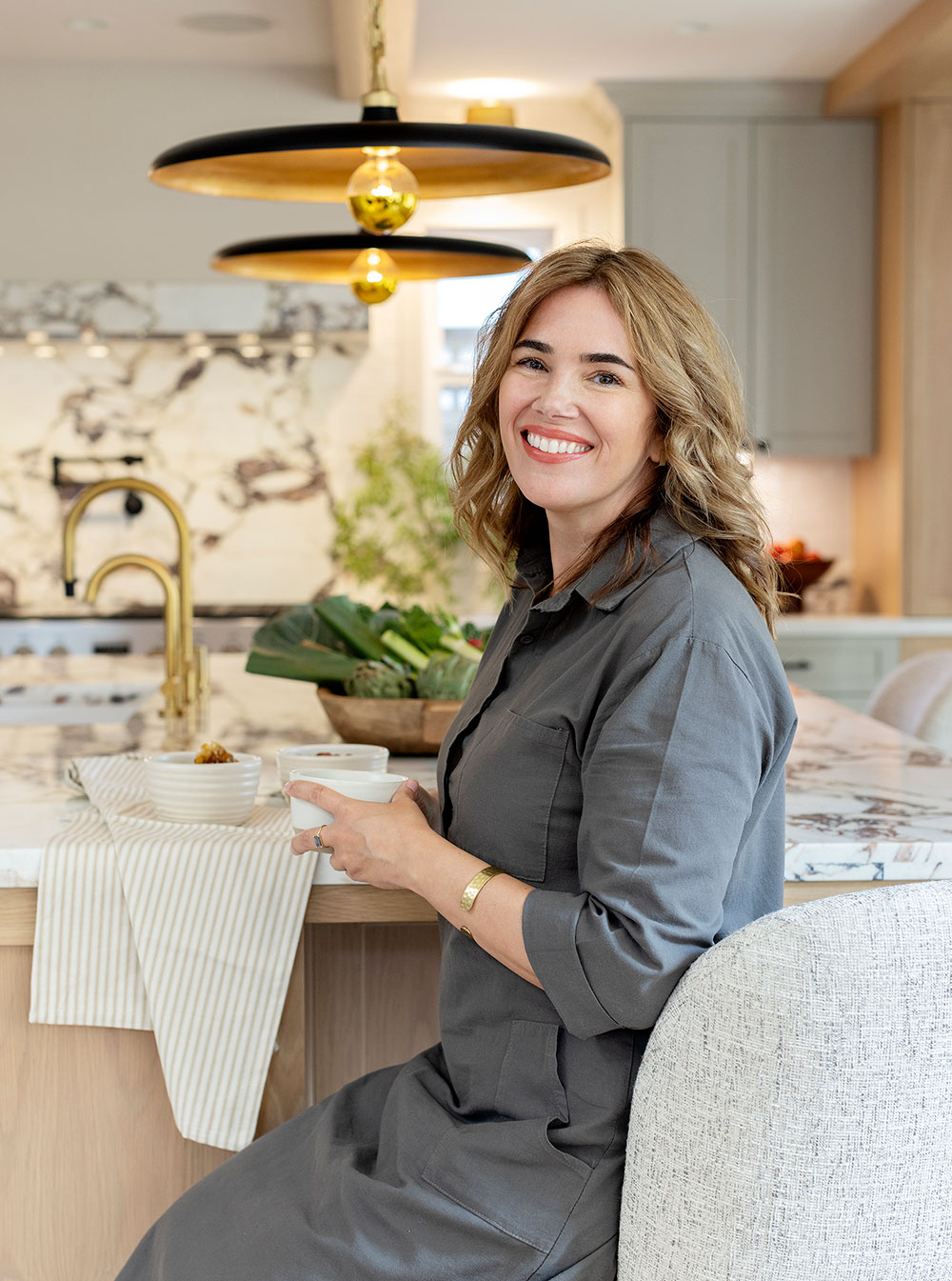
Ami McKay founded PURE Design in 2000 on the belief that design is found in the art of giving. The work that she puts into each project reflects her personal life experiences and she believes they are at the heart of her business. Today, she is proud to be named one of Canada’s Top Five Interior Designers.
1. 'Think Wabi-sabi aesthetic'
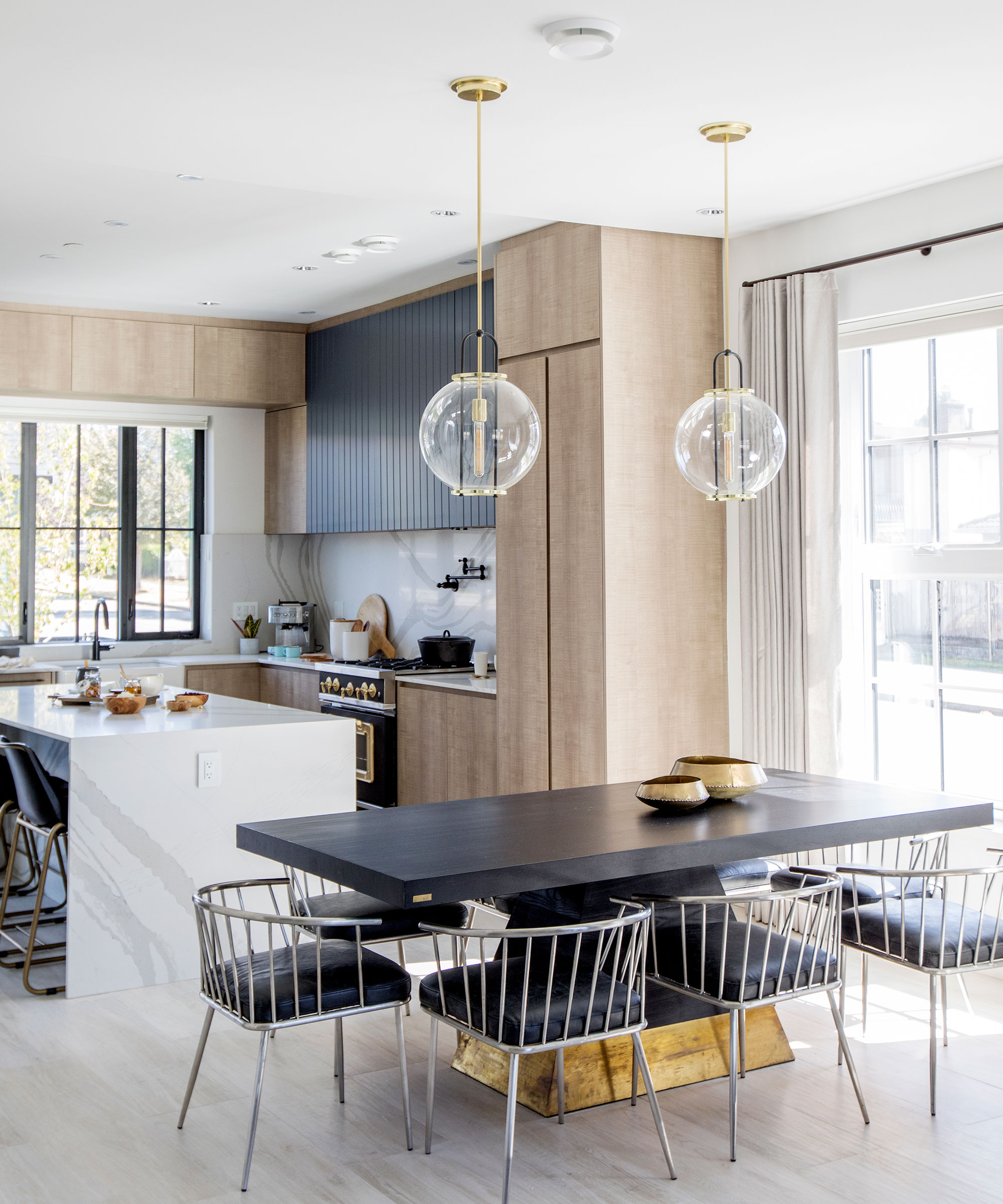
Much of choosing dining room furniture is a matter of personal preference. Instead of conforming to matching everything, take the opportunity to embrace imperfection and approach this space with fluidity:
'Think Wabi-sabi aesthetic,' says McKay. This is a traditional Japanese concept that in short takes a more accepting approach to decor, embracing the transcience of beauty and imperfectness. As author Andrew Juniper puts it in Wabi Sabi: The Japanese Art of Impermanence, 'Wabi-sabi is an aesthetic that finds beauty in things imperfect, impermanent, and incomplete.'
Embrace that your dining space may feel different and fluid, but that is also what makes it look beautiful.
2. Mix and match different eras
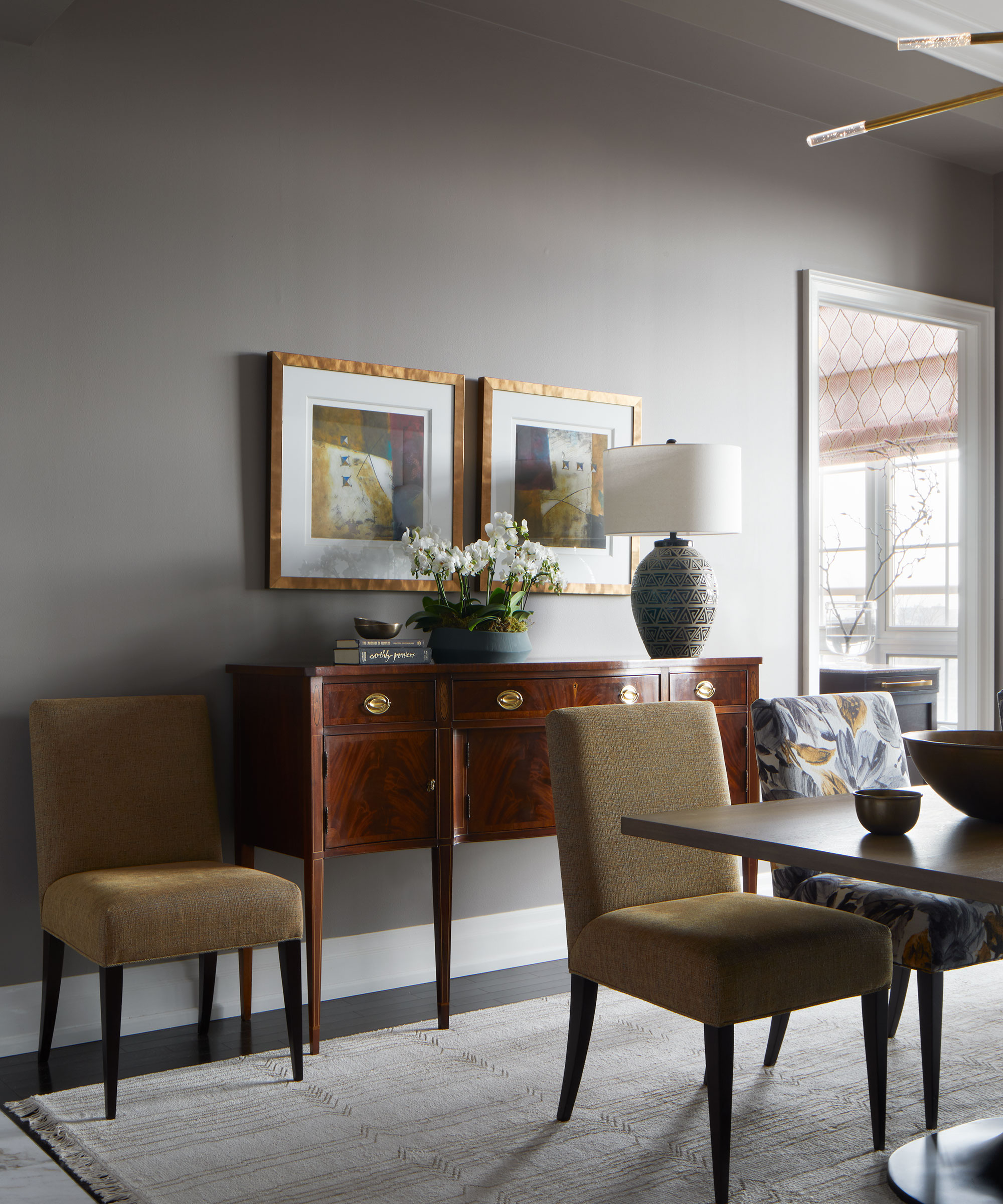
Old and new is often a wonderful combination, and this can bring lots of interest to a dining room space too. You should still ground the overall feel of the furniture through thoughtful design detail. This can be done with the choice of color or even material.
'There should still be a cohesive theme in your color palette along with neutral tones and materials, but pieces can be hand-picked from different eras and styles. A fun idea is having a set of chairs with different (but similar) upholstery on each chair,' says McKay.
3. Punctuate with more distinctive features
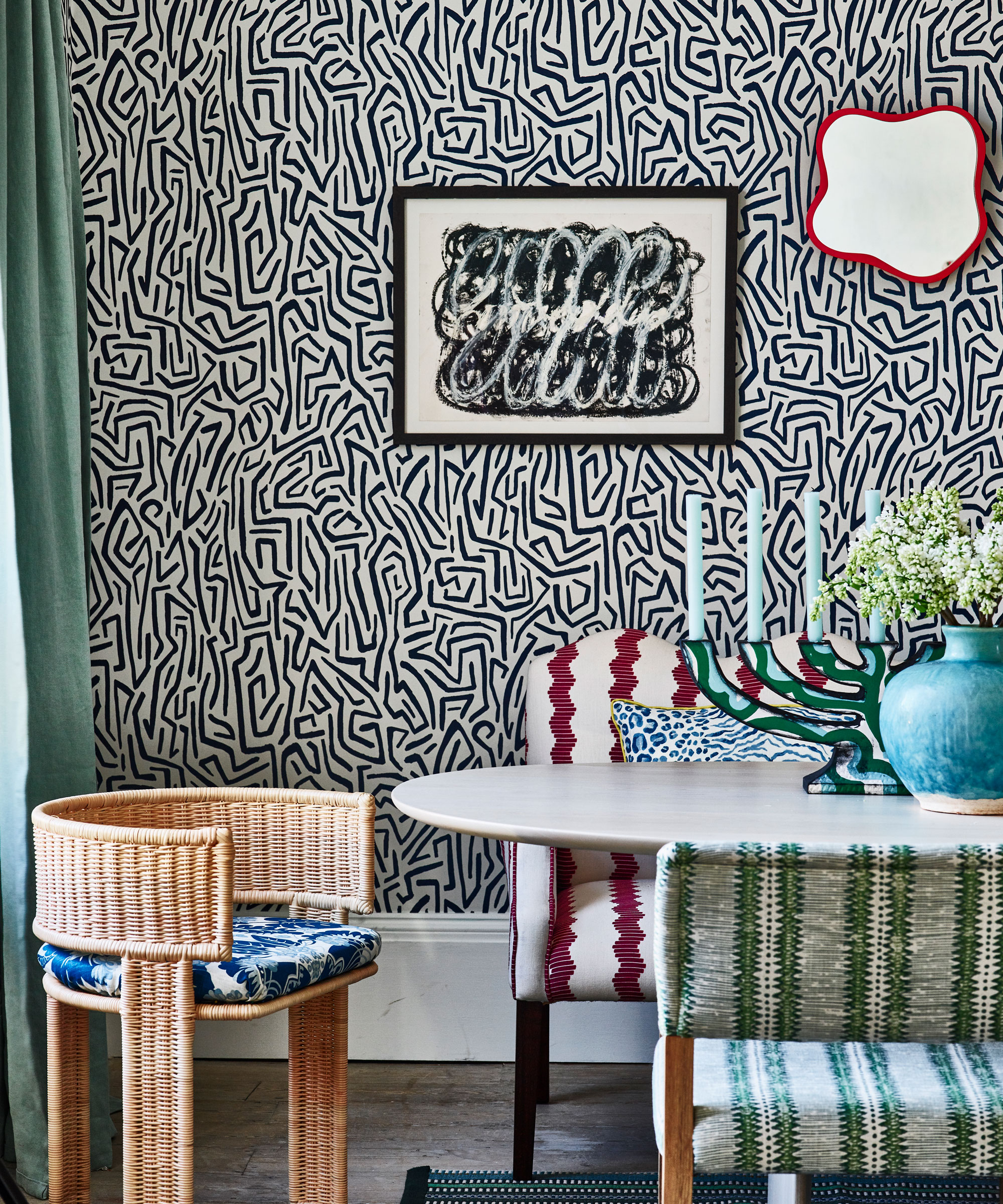
'Contrary to traditional norms, the trend in dining room interior design has gradually shifted towards a more eclectic approach, especially when it comes to furniture,' says design principal, Kati Curtis. 'The idea is to create a diverse yet harmonious assemblage instead of having all pieces match perfectly.'
Curtis further encourages us to include more punctuating accents, as part of our furniture: 'It's absolutely acceptable to have distinctive host and hostess chairs,' says Curtis. Consider a bolder fabric chair at the head of the table for instance, alongside chairs that feel like they are from the same era, with a slight design variation.
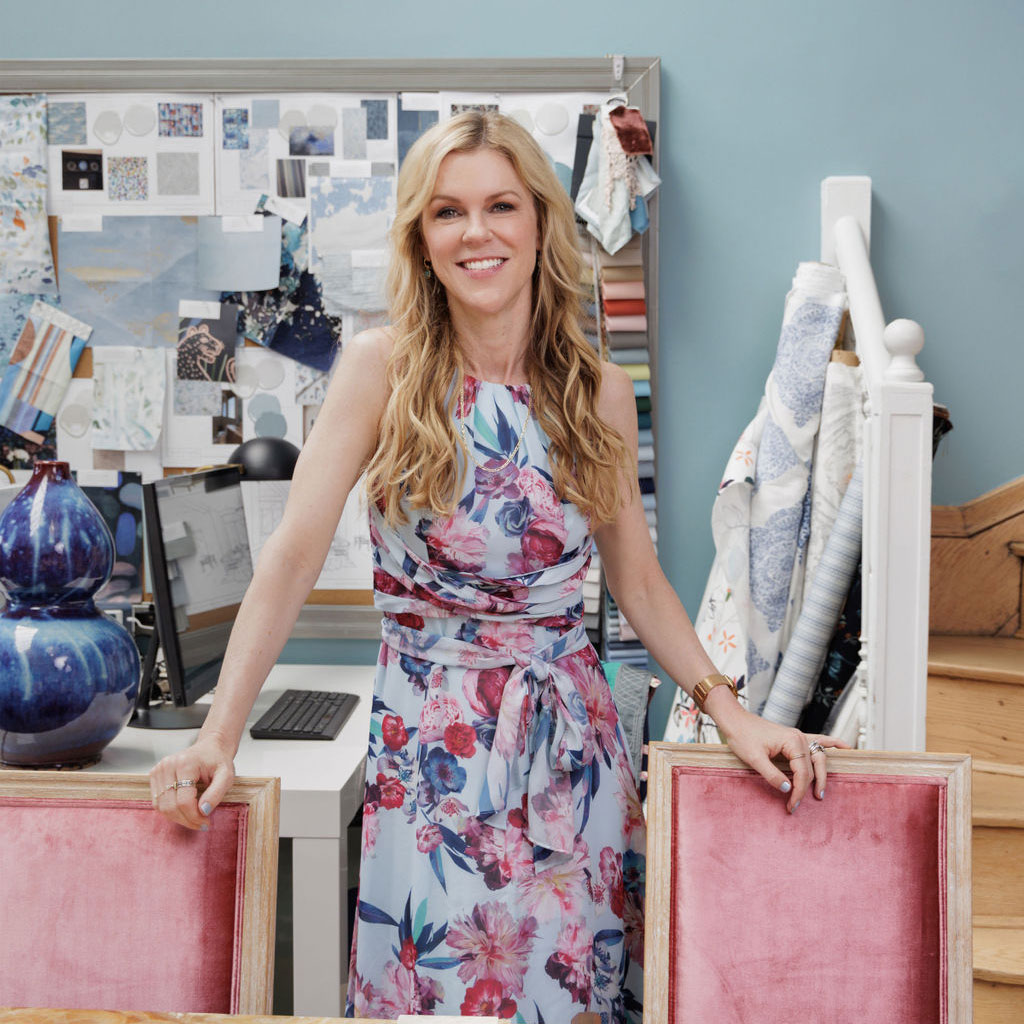
Kati energizes spaces with a fearless commitment to pattern and texture, color and motif. That commitment is invigorated by friends, mentors, and clients who share her design passions and passion for design. It’s reinvigorated by Kati’s chronic and incurable travel-bug, which has taken her around the world. Kati's work has been featured in Architectural Digest, The Wall Street Journal, The New York Times, and Interior Design Magazine, among many others.
4. Combine complementary and contrasting furniture
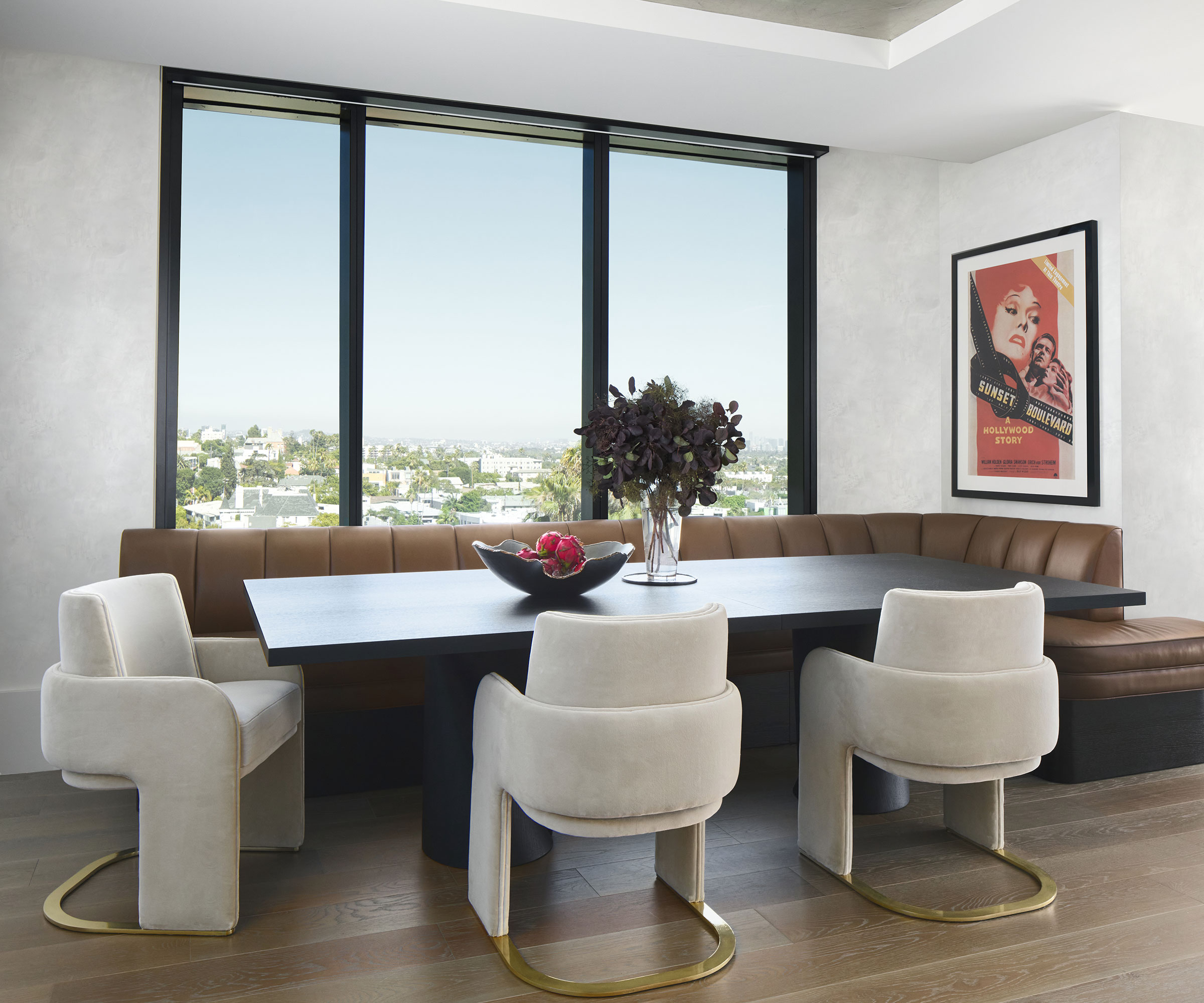
Mixing colors, prints, and materials in any room can add design interest, and this is no different when done through dining room furniture. A monochromatic scheme can come across as a little flat so layer sumptuous fabrics with rich wood tones or more lustrous metals for an elevated and unique finish.
'Matching furniture tends to make rooms look like they were purchased out of a catalog, so we never do that,' says Kara Smith, founder of KES Studio. Smith further highlights that it is never a case of one look working for all clients. It's all about how your furniture sits together: 'Rather than matching furnishings, we create spaces that feel curated by carefully combining furniture that is a combination of complementary and contrasting. Striking the proper balance of lines, finishes, and materials makes a room work.'
McKay notes the importance of checking in to see how furniture works together too: 'Don’t be afraid of contrast and a bit of tension between elements such as wood and metal but stand back and make sure it feels good as a whole.' So when making edits to your space, pause and reflect on what is giving good results and tune in to what is not.

Kara Smith, founder of KES Studio, is a self-taught designer with a passion for exploring new styles, curating art from around the globe, and integrating bespoke product design. Viewing each project as a chance to craft something truly unique, Kara believes that thoughtful design begins with understanding the client’s aesthetic as well as the goals and challenges of the project and fusing it with her interpretation to create iconic and bespoke designs. While Kara is intimately involved with each project on a day-to-day basis, she continually seeks inspiration through travel, art, and culture. She is not only aware of emerging trends, but is a tastemaker herself, helping to influence the future of design.
5. Curate the space over time
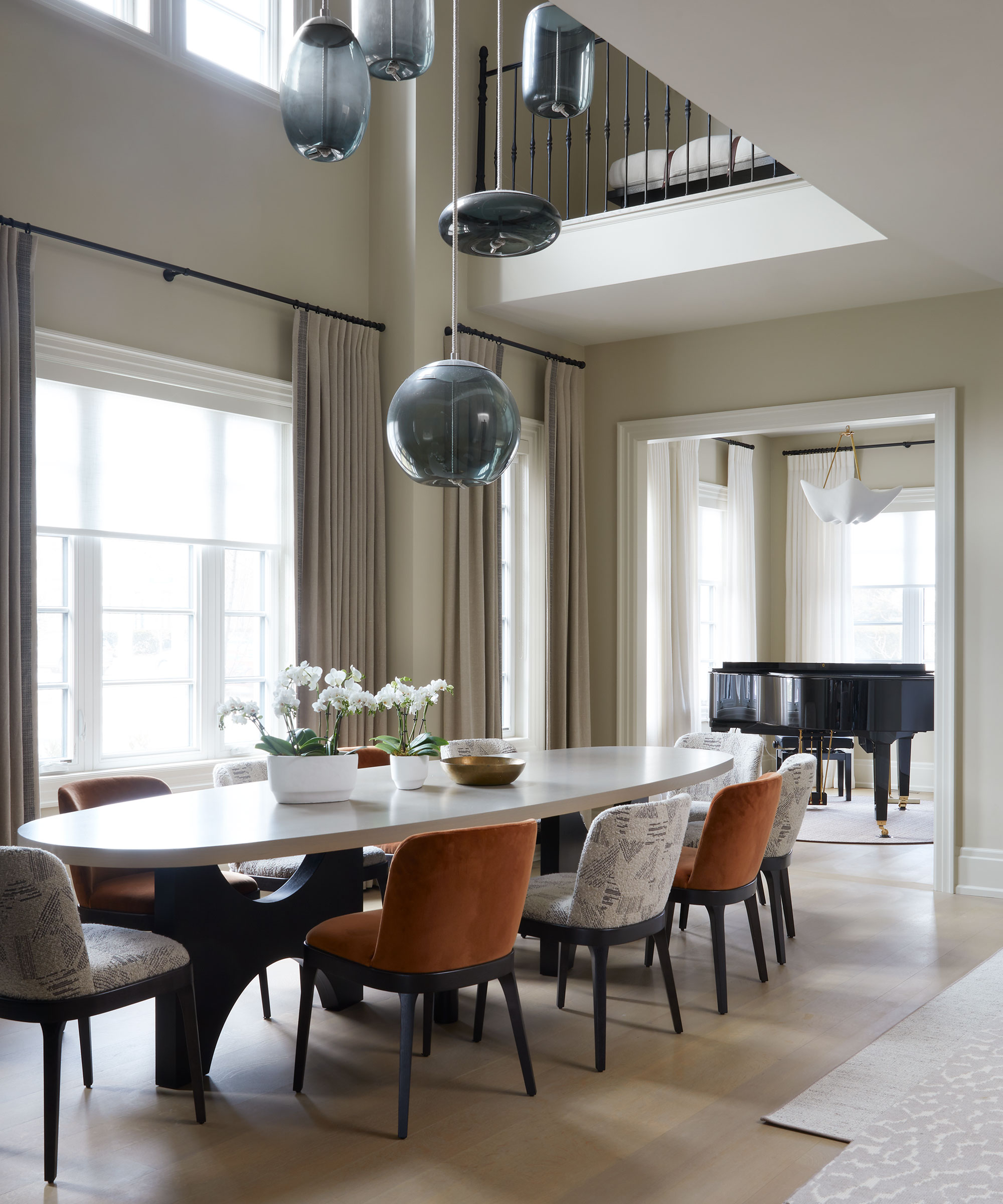
This leads us to our final point. Rome was not built in a day, and nor should your dining room be.
'I prefer when the furniture doesn't all match,' shares Interior Designer Gillian Gillies.
'Yes, it still has to be cohesive and should feel purposeful, but I feel dining rooms are more approachable when the pieces are a little miss-matched.'
Gillies is an advocate for taking a slower and more considered approach to decor, especially in homes that like to host: 'When furniture is curated and acquired, rather than matched and shopped, your space feels more authentic and you will want to use it more. More often than simply when you have a special occasion.'
A look that comes across as more carefully put together, is one we should strive to achieve.
'This mix-and-match strategy lends a collected feel to the decor, making the dining room appear like it's been curated over time rather than picked out in one shopping trip,' adds Curtis.

Since moving to Canada and opening her studio in 2004, Gillian Gillies Interiors has grown to become an award-winning and sought-after interior design firm. Gillian understands the power of creating a home for her clients and she knows that the right home with the correct design selections can greatly improve her client’s quality and outlook on life. She believes in frictionless living, and talks at length with her clients to get to know them and to understand their specific needs, wishes, and desires. Life can come with baggage and Gillian wants to ensure there’s a space for everything whilst also lightening the load we can all carry.
FAQs
Do dining room chairs have to match?
Some may prefer to match chairs to one another, but keep them distinct from the dining table, it comes down to personal preference and the overall look you are trying to achieve. McKay encourages a little playfulness with chairs.
'A well-loved vintage wood table paired with contemporary moulded chairs is visually appealing. But even the chairs don’t have to match. You can have a mismatched collection or a set of side chairs and different head chairs,' says McKay.
Do my chairs have to match my dining table?
No, your chairs and dining table do not have to match. On no account are we obliged to match dining room chairs to the table itself. Far from it. In fact, especially if you are styling your dining room to welcome guests, you will want to keep this a little more distinct.
'The dining chairs, for instance, should complement each other, but not necessarily the dining table or sideboard. This approach adds a layer of richness to the room's aesthetic, infusing it with character and charm,' says Curtis.
Dining room furniture needn't match to create a space that is intriguing, balanced, and ripe for entertaining. Incorporate your own style preferences and accent in ways that complement your home's character for a unique finish to be proud of.
Sign up to the Homes & Gardens newsletter
Design expertise in your inbox – from inspiring decorating ideas and beautiful celebrity homes to practical gardening advice and shopping round-ups.

Camille is the former deputy editor of Real Homes where she covered a broad range of topics, including house tours, small space design, and gardens. She studied English language and Italian at the University of Manchester and during a year abroad studying linguistics and history of art in Bologna, Italy she started documenting her adventures and observations in a blog. Camille is always creating and spends her downtime painting, taking photos, traveling, and writing short stories.
-
 Plants never to grow next to fruit trees
Plants never to grow next to fruit treesExpert advice on which plants to keep away from fruit trees to encourage a healthy harvest
By Jacky Parker Published
-
 Martha Stewart's tips for arranging daffodils are unbelievably simple and effective – it's the only flower advice you need this springtime
Martha Stewart's tips for arranging daffodils are unbelievably simple and effective – it's the only flower advice you need this springtimeMartha shows us that we can create gorgeous bouquets of this seasonal flower by simply trimming the stems and placing them in specific vases
By Hannah Ziegler Published